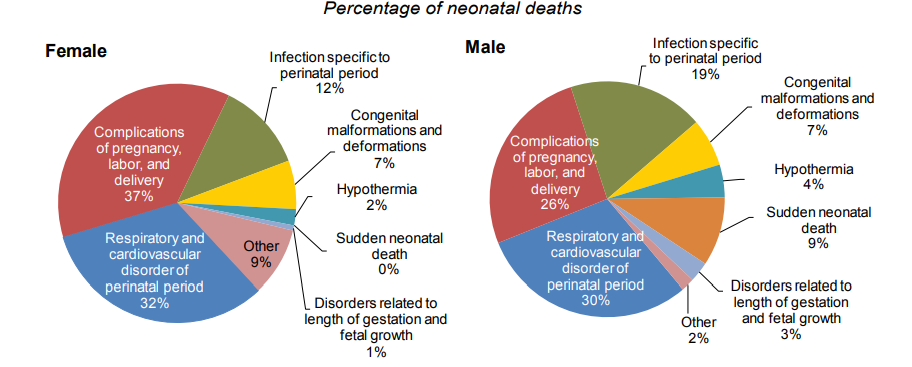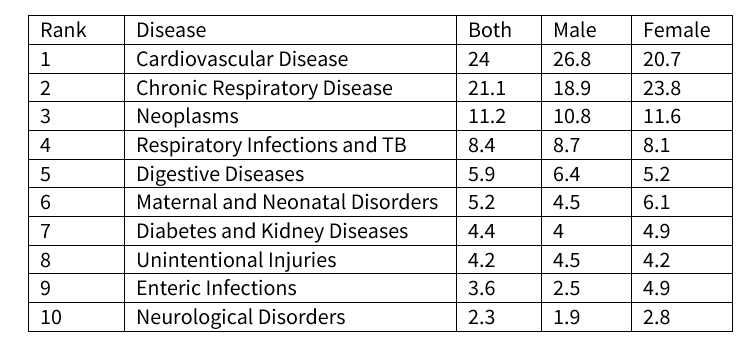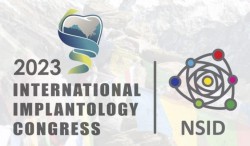Life & Health

Also Read: Top 10 causes of death in Nepal (Part I)
Maternal and Neonatal Disorders
Maternal and neonatal disorders are another major cause of death in Nepal.
According to Nepal Demographic Health Survey 2016, maternal deaths are a subset of all female deaths; they are defined as deaths that occur during pregnancy or childbirth, or within 42 days after the birth or termination of a pregnancy, but are not due to accidents or violence.
The maternal mortality ratio for the period 2009-2016 is 239 deaths per 100,000 live births. About 12 per cent of deaths of women, age 15-49, are maternal deaths, the NDHS reports.
Nepal witnessed a stagnant neonatal mortality rate of 33 per 1,000 in the preceding five years as shown by the 2006 and 2011 NDHS surveys.
The most common underlying causes of neonatal death are respiratory and cardiovascular disorders of the perinatal period (the time frame from one year before to 18 to 24 months after the birth of the child) and complications of pregnancy, labour, and delivery. These are followed by neonatal deaths from infections specific to the perinatal period and congenital malformations and deformations.
Neonatal tetanus is a leading cause of death among neonates in developing countries, including Nepal, where a considerable proportion of deliveries take place at home or at locations where hygienic conditions are compromised.
The Ministry of Health recommends that a pregnant woman has ANC visits at least four times during her fourth, sixth, eighth and ninth months.
Diabetes and Kidney Diseases
Diabetes is a chronic disease that occurs either when the pancreas does not produce enough insulin or when the body cannot effectively use the insulin it produces. Insulin is a hormone that regulates blood sugar.
In 2019, diabetes was the direct cause of 1.5 million deaths and 48 per cent of all deaths due to diabetes occurred before the age of 70 years, according to the World Health Organization report.
Diabetes and kidney diseases were responsible for 4.4 per cent of total deaths in both sexes, 4 per cent of the total deaths in males and 4.9 per cent of total deaths in females, the NHRC report noted.
Tobacco use, physical inactivity, unhealthy diet and harmful use of alcohol increase the risk of diabetes.
Achieving and maintaining a healthy body weight, being physically active, eating a healthy diet, avoiding sugar, avoiding tobacco use help people prevent diabetes, the UN health body says.

Unintentional Injuries
Among injuries, falls were among the leading causes of death in 2019 with almost two per cent of total deaths being due to falls, which is an increase from one per cent of total deaths in 1990.
Deaths due to injuries such as falling from trees or cliffs are more common in young adults.
Injuries leading to lives lost in 2019 included self-harm, falls, drowning, pedestrian road injuries and motorcyclist road injuries.
People dying from road accidents are very common in Nepal. According to Nepal Police records 39,379 accidents occurred in Nepal in the fiscal year 2021/2022 and the accidents resulted in 2,883 deaths.
Of the road accidents, head injuries from motorbike accidents were most common. As per the police data, among people involved in the 19,974 motorbike accidents, 191 lost their lives, and among them, 117 had been killed in Kathmandu valley alone.
“If road accidents decrease more lives will be saved. To reduce the number of accidents, members of the public and all the three tiers of government must work together,” said Associate Professor Dr Gopal Sedhai of the Department of Neurosurgery, Tribhuvan University Teaching Hospital.
Enteric Infections
Enteric diseases are caused by micro-organisms such as viruses, bacteria and parasites that cause intestinal illnesses.
Enteric infections are a major cause of morbidity and mortality in low-income and middle-income countries, particularly among children younger than five years, the UN health body says.
As per the NHRC report enteric infections account for 3.6 per cent of total deaths in both sexes - 2.5 in male and 4.9 in female.
“Maintaining food hygiene, water sanitation and hand hygiene helps in reducing the number of cases,” said Dr Bastola.
Neurological Disorders
Neurological disorders, ranging from epilepsy to Alzheimer’s disease, from stroke to headache, affect up to one billion people worldwide. Neurological disorders also include brain injuries, neuroinfections, multiple sclerosis and Parkinson’s disease.
The use of helmets by motorcyclists and seat-belts by motor vehicle riders can prevent traumatic brain injury. Immunisation against meningitis and early identification and treatment of malaria are additional examples of concrete actions to reduce the burden of neurological disorders.
With the increasing life expectancy of Nepalis, neurological disorders are rising, too.
Talking to NepalMinute Dr Sedhai said: Elderly are suffering from Alzheimer’s. People with increased blood pressures in a very young age are increasing in Nepal. People are dying from stroke. It is basically because of the diet and lifestyle we are following. When there is a rise in the cholesterol in your blood, it can block the blood vessel or burst it. A modified life with active lifestyle, maintained body weight and cessation of tobacco use, regular health check-up and intake of medicines to maintain one’s blood pressure will decrease the number of neurological disorders.

_11zon1681280198.jpg)




